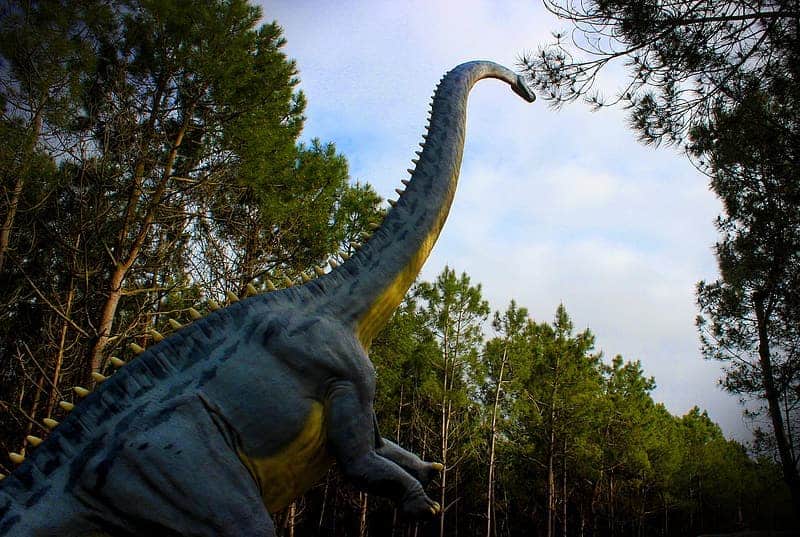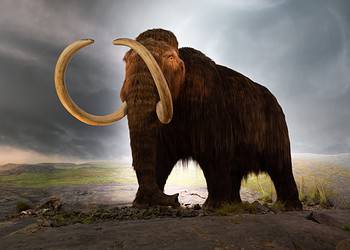
With their long necks, bulging bodies, and long tails, you had to be blind to not notice a sauropod. These were the largest creatures to ever walk on land — some reaching towering heights of 12 meters (40 feet) — but how they managed to grow to such stupendous scale, outcompeting all other herbivores, has always been a matter of great debate among paleontologists. A new study suggests the timeline of sauropod expansion of range and growth in size corresponds with a major extinction triggered by volcanic eruptions in the Early Jurassic.
How some dinosaurs got their long necks
Earth has been no stranger to global cataclysms that wipe out countless species. Over the last half-billion years there have been five major wipeouts, known as mass extinctions, in which well over half of all living creatures disappeared within a geological blink of the eye. Between these major wipeouts, there were minor extinction episodes, such as the Toarcian Oceanic Anoxic Event, during which a series of carbon dioxide-rich volcanic eruptions plunged the world into global warming roughly 182 million years ago.
Similar to human activity today, the Early Jurassic eruptions introduced excess carbon dioxide into the atmosphere, which made the oceans more acidic, thereby causing a mass extinction of marine life. Although plants have a reputation for being a carbon sink, during that time terrestrial ecosystems were dominated by ferns, cycads, and ginkgoes, which didn’t do too well in the now arid, warmer climate. Instead, the shift in climate proved ideal for conifers, which flourished.
However, only animals tall enough to reach the conifers and with stomachs tough enough to digest the spiny leaves could access the nutritional source. One such creature must have been Bagualia alba, a five-ton heavyweight herbivore and the earliest eusauropod, or “true sauropod”, found to date.
B. alba‘s fossils were described by Argentinian paleontologists for the first time in a study published today in the journal Proceedings of the Royal Society B. The fossils, including a partial skull of the ancient giant, were unearthed in the Cañadón Asfalto Basin in Argentina. They suggest B. alba had similar characteristics to famous sauropods like diplodocus and brontosaurus, such as large legs, long necks relative to the body, thick, spoon-shaped teeth, and broad, strong jaws.
During the Early Jurassic, plant-eating sauropods competed with other herbivores, including members of their own clade with less powerful jaws and shorter necks. It has always been unclear why eusauropods grew in leaps and bounds, but now we have a very reasonable explanation — the new fossils show that the Toarcian Oceanic Anoxic Event provided the perfect storm for the dawn of the long-necked sauropods.
According to the authors of the study, this is the first time that the availability of ancient plants have been linked with the evolutionary development of a dinosaur that included them in their diet.
“We show that eusauropod dominance was established after a massive magmatic event impacting southern Gondwana (180–184 Ma) and coincided with severe perturbations to the climate and a drastic decrease in the floral diversity characterized by the rise of conifers with small scaly leaves. Floral and faunal records from other regions suggest these were global changes that impacted the terrestrial ecosystems during the Toarcian warming event and formed part of a second-order mass extinction event,” wrote the researchers from the Museum of Paleontology Egidio Feruglio in Trelew, Argentina.






